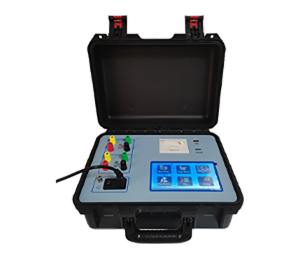 English
English


Alternating Current (AC) Generator
Understanding Alternating Current (AC) Generators
Alternating current (AC) generators, commonly referred to as alternators, are pivotal devices in the production of electrical energy. They convert mechanical energy into electrical energy using the principles of electromagnetic induction. This article explores the workings, components, and significance of AC generators in modern electricity generation.
At the core of an AC generator lies the principle of electromagnetic induction, first discovered by Michael Faraday in the 19th century. This principle states that when a conductor, such as copper wire, moves through a magnetic field, an electric current is induced in the conductor. AC generators utilize this phenomenon by having a rotating magnetic field, which induces an alternating current within the stationary coil of wire.
Understanding Alternating Current (AC) Generators
Another crucial aspect of an AC generator is its waveform, which represents how the voltage varies with time. Ideally, the output waveform of an AC generator is sinusoidal. This is essential because many electrical appliances are designed to operate on sinusoidal current. The frequency of the generated AC is determined by the speed of the rotor and the number of poles in the generator. In many countries, the standard frequency for AC power is either 50 Hz or 60 Hz.
alternating current ac generator

The efficiency of AC generators is further enhanced by using various design techniques. For instance, the use of laminated cores in the stator can minimize energy losses due to eddy currents. Additionally, generators can be designed to operate in synchronous mode, where the rotor's speed is synchronized with the frequency of the output current, ensuring a stable voltage supply.
AC generators are of significant importance in various applications. They are extensively used in power plants to generate electricity for commercial and residential use. The versatility of AC allows it to be transmitted over long distances with minimal losses, making it the preferred choice for electrical power distribution networks. Furthermore, AC generators can be scaled for different uses, from small portable generators to large power plants, providing flexibility based on energy needs.
As the global demand for energy continues to rise, AC generators play a central role in transitioning towards renewable energy sources. Wind and hydroelectric power plants utilize AC generators to convert kinetic energy from wind or flowing water into electrical energy. Moreover, advancements in technology continue to improve the efficiency and reliability of AC generators, making them even more integral in meeting energy challenges.
In conclusion, AC generators are a marvel of modern engineering, vital for the generation and distribution of electricity. By understanding their principles, components, and applications, we can appreciate their role in powering our daily lives and driving the transition toward sustainable energy solutions. With continuous innovations, AC generators will undoubtedly remain at the forefront of energy generation, providing reliable power to meet the world's growing demands.
-
Differences between open cup flash point tester and closed cup flash point testerNewsOct.31,2024
-
The Reliable Load Tap ChangerNewsOct.23,2024
-
The Essential Guide to Hipot TestersNewsOct.23,2024
-
The Digital Insulation TesterNewsOct.23,2024
-
The Best Earth Loop Impedance Tester for SaleNewsOct.23,2024
-
Tan Delta Tester--The Essential Tool for Electrical Insulation TestingNewsOct.23,2024





